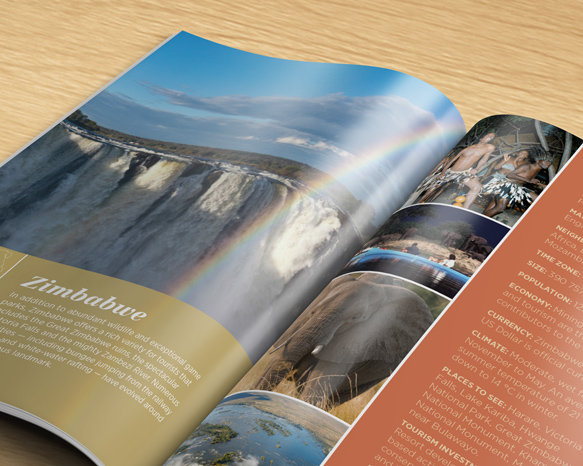
Promoting seamless travel between South African countries
Challenge
With the goal of increasing trade in tourism services and easing the movement of travelers across their borders, partner countries of the Kavango Zambezi Transfrontier Conservation Area (KAZA) were in the process of transitioning their individual visa programs into a single unified visa system called KAZA VISA. This was to be the prototype for a wider unified visa program among the partner countries of the Southern African Development Community. As part of an awareness campaign launching at the United Nations World Tourism Organization 2013 Assembly, The World Bank needed a brand identity and communication materials that would garner support and leverage growing enthusiasm for the KAZA Visa program.
Solution
The primary draw for most of the KAZA partner countries is their abundant and unique flora and fauna. As such, images of wildlife are central to the design for the KAZA Visa collateral, and a white bird in flight is a key element of the program's brand identity. In certain formats, the logo was expanded to include an illustrated depiction of the Victoria Falls Bridge that connects Zambia and Zimbabwe which, with Zambia and Zimbabwe as the two pilot countries for the KAZA Visa, was symbolic of their close partnership in the program.
A small booklet provides detailed information about the KAZA Visa as well as profiles of the KAZA partner countries. As KAZA Visa is ultimately a promotion for travel within and among the KAZA partner countries, the booklet was formatted to have a similar feel as a passport. Although the KAZA team lacked access to high quality photos, many compelling images of local landscape and wildlife were carefully curated from stock photography.
Business stationery and a large stand-up banner helped The World Bank and KAZA teams promote the program at various events and generate support among current and prospective program participants and backers. With communication materials to provide clarity and a visual identity to rally around, the program grew awareness of Zimbabwe and Zambia as competitive international tourism destinations for cross-border tourism activities.









